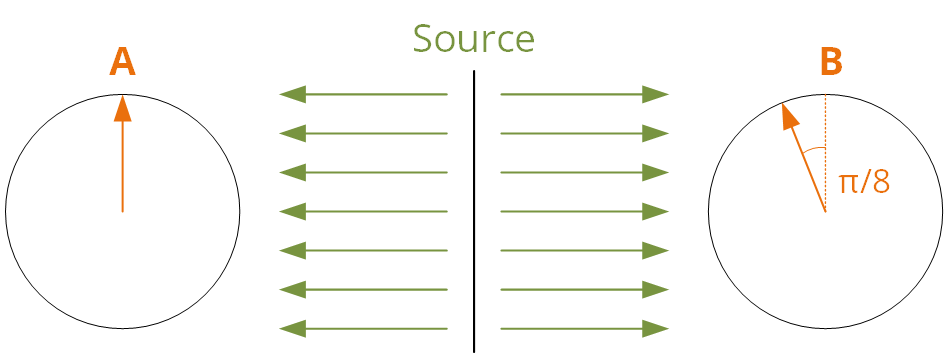Sorry if it's a newbie question, but I have trouble understanding the following part in the Wikipedia's explanation for the Bell's theorem:
With the measurements oriented at intermediate angles between these basic cases, the existence of local hidden variables could agree with a linear dependence of the correlation in the angle but, according to Bell's inequality (see below), could not agree with the dependence predicted by quantum mechanical theory, namely, that the correlation is the negative cosine of the angle. Experimental results match the curve predicted by quantum mechanics.
Accompanied with the following plot showing corellation as a function of angle:

But, the thing that troubles me is that I can't find the proof to that reasoning. A projection of a line onto an axis is the cosine of its angle, right?
To clarify, if I slightly modify the image from that article, let's say you measure particles A and B using parallel detectors:

The results are perfectly correlated (well, anti-corellated, but that's due to spins being different), as expected.
Now, if you deflect the B measurement device slightly ($\pi/8$, since that's where the "large classical error" happens), we can represent it like this:

As a complete newb, my knee-jerk reaction would be that detector B would detect a projection of $cos(\pi/8)$ length, compared to the detector B, as shown in the detail:

Why does the classical theory predict linear correlation, then?
